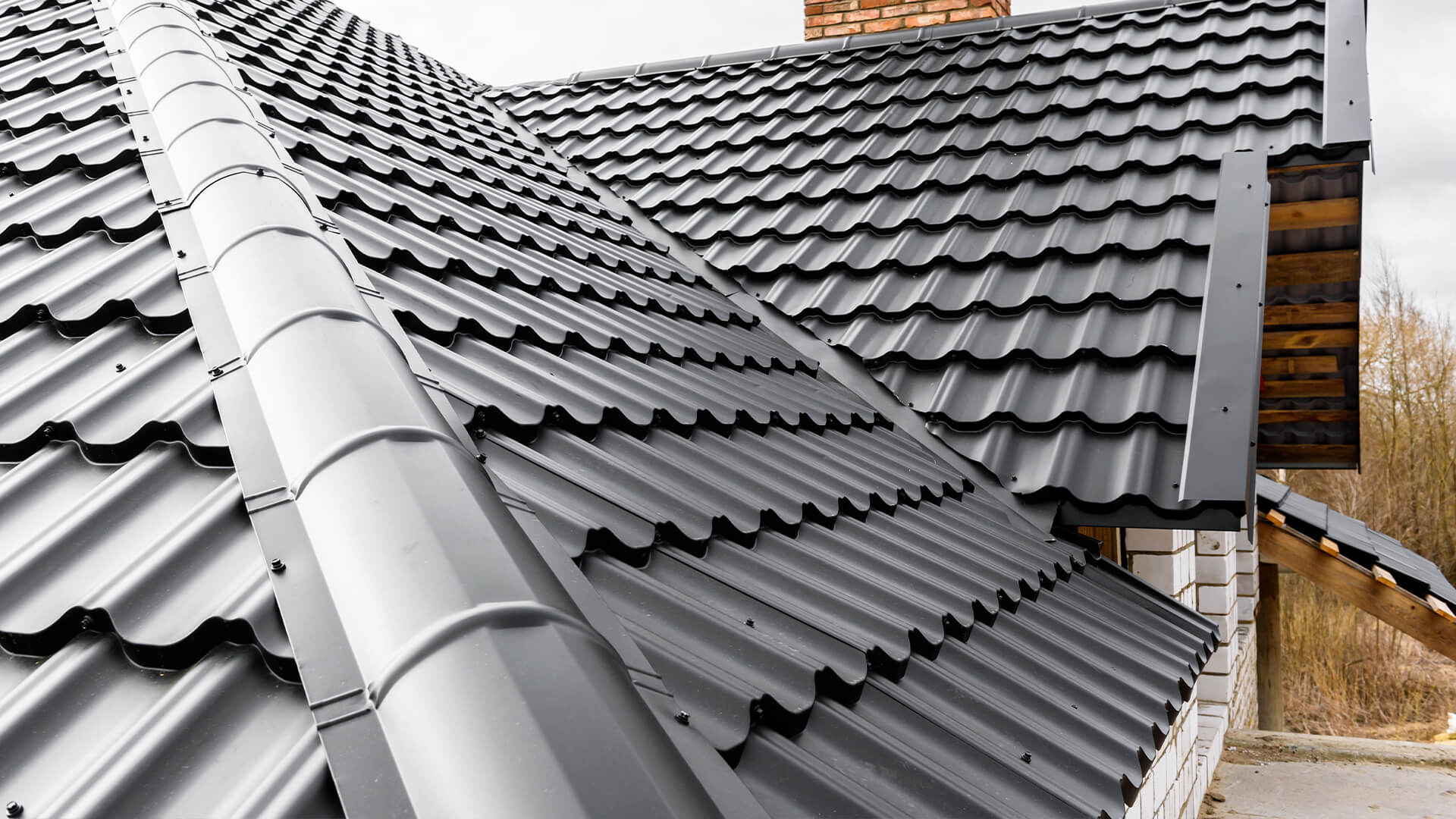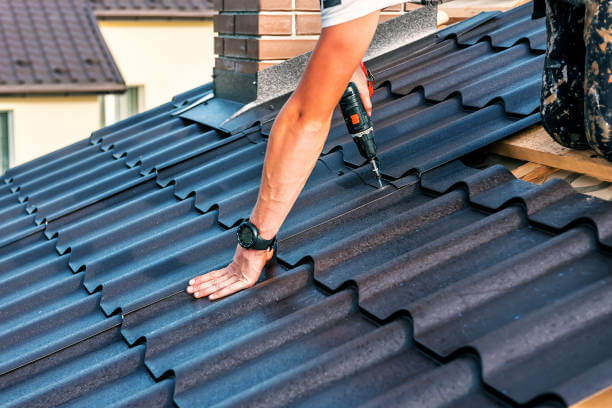Usual Issues That Can Impact Your Roofing and How to Address Them
Roof covering concerns can develop from various variables, affecting the stability of a home. pleasant hill roofer. Typical problems include leaks, missing shingles, and inadequate ventilation. Home owners often overlook these worries until they escalate, leading to more considerable damages. Comprehending the options and causes is necessary for preserving a roofing's long life. What actions can be taken to stop these problems from coming to be pricey repairs?
Roof Leaks and Their Causes
Roofing system leaks can arise from numerous resources, recognizing their primary reasons is essential for efficient prevention and repair. One typical factor is the accumulation of debris in valleys and gutters, which can obstruct water flow and cause merging. Furthermore, improper flashing around chimneys, vents, and skylights can create weak factors, allowing water to infiltrate. Aging roof products also play a substantial duty; as roof coverings age, they might come to be weak and lose their effectiveness at fending off moisture. Ice dams can develop throughout winter season months, creating water to back up under shingles and leakage into the home. Finally, inadequate air flow can lead to moisture accumulation in the attic room, which might compromise the roofing structure gradually. Determining these reasons can assist home owners take aggressive measures to keep their roof coverings and avoid costly repairs.
Missing Out On or Harmed Tiles
Several homeowners deal with issues with missing out on or harmed roof shingles, which can substantially endanger the honesty of a roof covering. Shingles can become dislodged or weaken because of rough weather condition problems, age, or bad installation. This damages commonly results in leaks, boosted power costs, and possible structural problems if not attended to promptly.To solution this concern, homeowners must conduct normal evaluations of their roofing systems, specifically after serious tornados. Determining missing out on or harmed shingles early can stop additional complications. Replacing them quickly is essential if roof shingles are discovered to be missing out on. For small damages, such as splits or curling, applying roof cement can offer a temporary fix.In instances of extensive roof shingles damages, a complete roofing system replacement may be needed. Consulting with a professional roofer is suggested to assess the degree of the damage and recommend the most effective program of action to assure the roofing's longevity and performance.
Poor Roofing Air Flow
Poor roof covering air flow can lead to a range of problems, consisting of too much heat buildup and dampness build-up. Home owners may discover indicators such as warped tiles, peeling off paint, or mold development as indicators of poor airflow. roofing pleasant hill mo. Resolving these problems via reliable air flow services can greatly boost the roofing's lifespan and total home convenience
Indicators of Poor Air Flow
Just how can one identify the signs of inadequate roof covering air flow? Home owners may discover numerous indicators that aim to bad ventilation in their roofing system. One common indicator is the presence of too much heat in the attic room, often leading to increased power costs as a/c systems function tougher to cool the home. Furthermore, wetness accumulation may materialize as mold and mildew or mold, which can endanger both the roofing and interior air high quality. Contorting or staining of roof products can likewise indicate poor airflow. Ice dam development during winter months may indicate trapped warm due to not enough ventilation. Identifying these signs early can help house owners address air flow problems prior to they escalate right into even more significant roof covering problems.
Solutions for Improved Air Flow
To enhance roof covering ventilation, property owners can apply several reliable solutions that promote much better air movement and decrease warmth accumulation. One of one of the most effective methods is to install ridge vents, which enable warm air to get away from the peak of the roofing system. Furthermore, soffit vents can be installed along the eaves to attract cooler air right into the attic space. Including turbine vents or powered attic ventilators can better enhance circulation, specifically in hot environments. Property owners need to likewise make certain that insulation is appropriately mounted, as it can obstruct airflow otherwise located properly. Normal assessments and upkeep, including clearing up debris from vents, are vital to preserving reliable air flow and prolonging roof covering life.
Storm Damages and Its Impact
Storms can create numerous kinds of damages to roofing systems, significantly impacting their integrity and longevity. Recognizing indicators of roof issues quickly is necessary for efficient repair service and maintenance. Comprehending these facets can assist property owners guard their residential or commercial properties versus storm-related damage.
Sorts Of Storm Damages
Extreme weather occasions can trigger various kinds of damages to roofing systems, significantly impacting the honesty of a home. High winds can lift tiles or tiles, leading to subjected locations that may allow water seepage. Hailstorm can produce dents, fractures, or slits in roof covering products, deteriorating their safety abilities. Heavy rain can worsen existing susceptabilities, resulting in leaks and water damages. Furthermore, snow build-up can create structural stress and anxiety, potentially causing collapses if not properly handled. Particles from storms, such as dropped branches or rooted out trees, can cause significant physical damage. Comprehending these kinds of storm-related damage is essential for home owners to take prompt action and guarantee the long life of their roof covering systems.
Indications of Roof Issues
Several home owners might not promptly discover the indicators of roofing issues, several indications can recommend storm damages and its effect. Visible tiles that are cracked, missing out on, or crinkled typically show that the roofing has actually been compromised. Homeowners should also be attentive for granules in gutters or around the home, as this can signal roof shingles deterioration. Furthermore, staining or water spots on ceilings and walls might suggest leakages originating from storm-related damages. Sometimes, the visibility of mold and mildew or mold can indicate prolonged moisture direct exposure, further emphasizing the urgency of dealing with roof covering concerns. Sagging or unequal rooflines can recommend architectural problems that might have arisen after severe weather events, warranting prompt evaluation.

Fixing and Maintenance Tips
Resolving roof problems promptly can greatly minimize more damage and extend the life-span of a roofing system. Storm damage, such as missing out on leakages or shingles, requires immediate focus to avoid water seepage and architectural concession. Home owners should perform regular evaluations after extreme weather events to recognize possible damage. If noticeable problems arise, such as sagging or discoloration, it is recommended to get in touch with a professional roofing contractor for a thorough evaluation. Momentary repairs, like tarps, can supply short-term alleviation up until irreversible repair work are made. Normal upkeep, including cleansing seamless gutters and trimming looming branches, can likewise decrease the threat of future storm damages. By focusing on these repair work and maintenance pointers, home owners can improve the durability and performance of their roof.
Mold and Mold Growth
When wetness builds up on roof covering products, it produces an environment favorable to mold and mildew and mildew growth. This biological infestation can jeopardize the architectural stability of the roof covering and bring about substantial health concerns for occupants because of the launch of spores right into the air. Usual reasons for wetness build-up consist of poor air flow, leaks, and prolonged exposure to humidity.To combat mold and mildew and mold, homeowners need to regularly check their roof coverings for indications of water damage or staining. Executing appropriate air flow systems helps minimize humidity levels, while without delay attending to leaks is crucial. Cleaning up the roofing system with proper mold-removal options can also work. In severe instances, substitute of affected roofing materials might be necessary. Routine maintenance and caution can prevent mold and mold from ending up being a relentless concern, guaranteeing both the long life of the roofing system and the health and wellness of those living under it.
Buildup of Particles
Mold and mildew and mildew are not the only threats to roof covering materials; the accumulation of debris can also position substantial risks. Leaves, branches, and various other organic issue can gather on the roofing system, leading to different issues. When debris clogs rain gutters and downspouts, it stops proper water drain, which can lead to water merging and possible leakages. Furthermore, trapped dampness can develop an environment for mold and mold development, further degrading roof covering materials.Regular maintenance is crucial to minimize these threats. Property owners should regularly evaluate their roofings, specifically after storms or high winds, to remove any kind of built up debris. Cleaning up rain gutters and ensuring that downspouts are clear will certainly aid preserve correct drainage. In many cases, employing a specialist solution might be recommended to ensure thorough and risk-free cleaning. By dealing with debris buildup promptly, the lifespan of the roofing system can be extended, securing the home from more damage.
Aging Roof Products
Aging roof materials offer a substantial difficulty for house owners, as their degeneration can bring about major architectural issues. roofing pleasant hill mo. In time, exposure to severe climate condition, UV rays, and temperature fluctuations increases damage, decreasing the roofing system's efficiency. Asphalt tiles might break, curl, or lose granules, while metal roof coverings can develop corrosion and rust. These concerns not only jeopardize the roofing system's integrity however can likewise lead to leakages and water damage inside the home.To address aging roof materials, regular inspections are crucial. Homeowners need to try to find indications of wear, such as missing out on shingles or staining. Routine upkeep, consisting of cleansing seamless gutters and replacing damaged materials, can expand the life-span of the roof covering. In instances of serious degeneration, a full roofing replacement might be essential. Consulting with a specialist roofing professional can offer a precise evaluation and suitable options customized to the specific requirements of the home
Often Asked Inquiries
Exactly How Can I Inform if My Roof Requirements Substitute?
To identify if a roof covering needs substitute, one should evaluate for significant wear, missing out on tiles, leaks, or drooping. Consulting a roof covering expert can give an exact assessment and advice on needed activities for safety and durability.
What Are the Indicators of a Roofing Guarantee Issue?
Signs of a roofing system service warranty issue consist of noticeable leaks, considerable wear, or damages not triggered by exterior variables. Homeowners must document issues and seek advice from the service warranty terms to establish eligibility for replacements or fixings.
How Typically Should I Obtain My Roofing Inspected?
Regular roof examinations are recommended a minimum of two times a year, preferably in springtime and loss. This positive approach helps recognize possible troubles early, making certain the roof remains in good condition and extending its life-span.
Can I Execute My Own Roof Repairs?
The private contemplated the possibility of executing their own roofing system repair services. While some minor jobs may be convenient, caution is recommended; incorrect fixings can result in significant issues, calling for professional help for safety and performance.
What Is the Typical Life Expectancy of Different Roof Covering Materials?
